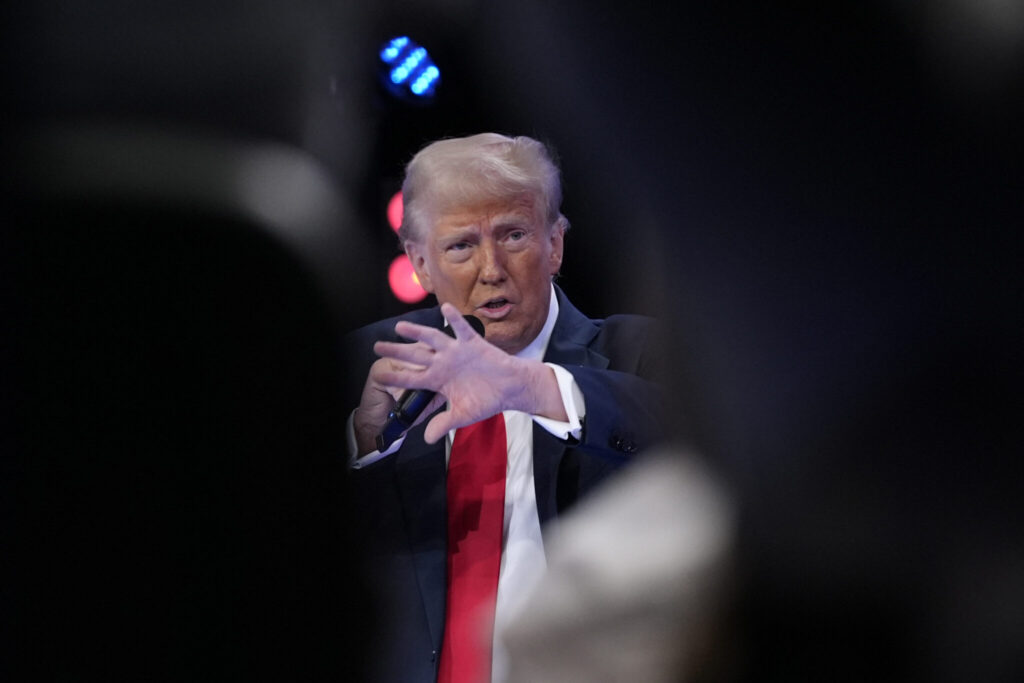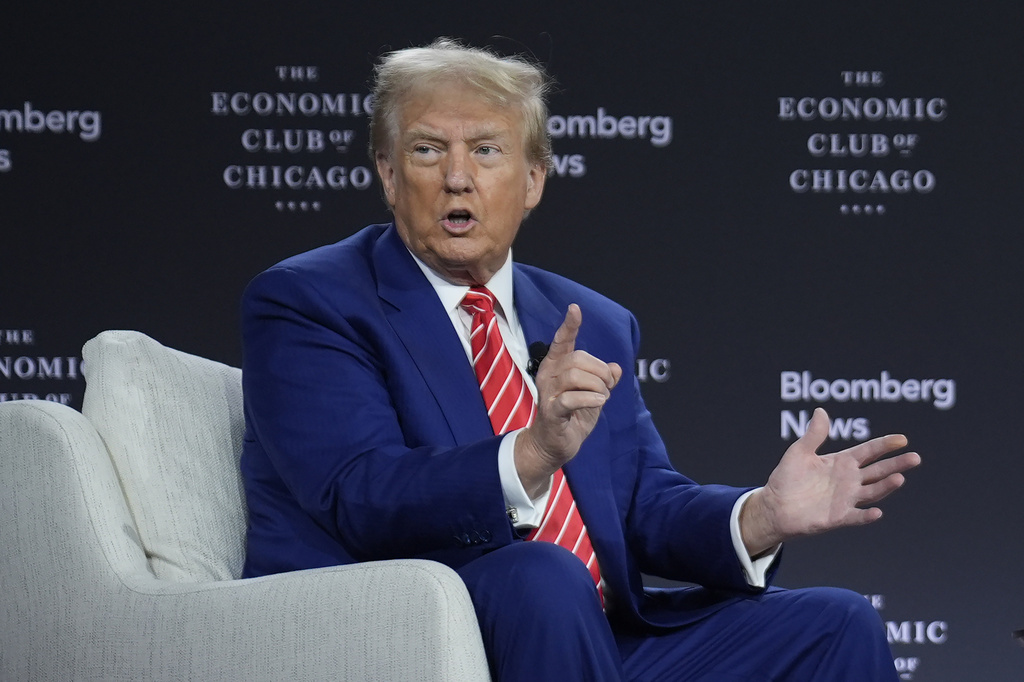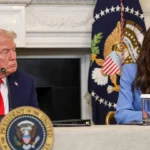Trump/ abortion/ reproductive rights/ 2024 election/ GOP policies/ Roe v. Wade/ Newslooks/ CHICAGO/ J. Mansour/ Morning Edition/ Donald Trump’s evolving and often contradictory stance on abortion highlights a major challenge in his 2024 campaign, particularly in reaching undecided voters. While boasting his role in overturning Roe v. Wade, Trump has also distanced himself from strict abortion bans in GOP-led states, creating an inconsistent message. His stance has fluctuated on state versus federal control, with shifting positions on a potential national ban and abortion pill access.

Trump’s Shifting Views on Abortion: An Issue in Focus – Quick Looks
- Inconsistent Messaging: Trump’s views on abortion have shifted from “pro-choice” to favoring state control, to sometimes supporting federal restrictions.
- State vs. Federal Debate: Trump has supported returning abortion decisions to states but recently opposed strict state laws, creating confusion.
- Recent Contradictions: In a recent Fox News town hall, Trump called some GOP state abortion laws “too tough” and suggested they should be reconsidered.
- National Ban: Trump has wavered on supporting a national ban, recently saying he would veto such a measure while previously indicating possible support.
- Impact on Voters: Trump’s mixed messages have drawn criticism, especially as abortion access has become a key election issue.
Trump’s Evolving Abortion Stance Reflects Broader GOP Tensions
Deep Look
Donald Trump’s varying stance on abortion has created a central challenge for his 2024 presidential campaign. The former president has shifted between positions on abortion access over the years, leaving voters and analysts uncertain about his approach on the issue if he returns to the White House. This inconsistency comes as abortion becomes a critical focus in the current political landscape, with both Republican and Democratic voters paying close attention to candidates’ views on reproductive rights.
In a recent appearance on Fox News, Trump added to this confusion by suggesting that some state-level abortion bans are “too tough” and should be “redone.” He did not specify which states or laws he was referring to, nor did he clarify what action he might take on the issue if elected. Trump’s statement marks a departure from his past advocacy for overturning Roe v. Wade, a decision enabled by the three Supreme Court justices he appointed during his presidency. These nominations were pivotal in ending federal protections for abortion access in 2022, following a longstanding Republican effort to shift control of abortion rights to the states.
However, Trump’s position has not remained clear-cut. During a recent Fox News town hall, Trump criticized certain strict state abortion laws passed in Republican-led states, calling them “too harsh.” In particular, he opposed a six-week abortion ban in Florida, calling it a “terrible mistake,” even though he later indicated he would vote against a ballot initiative to overturn the measure. This lack of a consistent message on abortion reflects Trump’s attempt to balance support from anti-abortion advocates with a general electorate that largely favors some form of abortion access.
Polling shows that about 60% of Americans believe abortion should generally be allowed in their state, and several conservative-leaning states have recently voted to protect abortion access. Trump has touted his role in returning the issue to the states, but has simultaneously hinted at potential federal involvement, particularly on a national ban. His running mate, Senator JD Vance of Ohio, stated during a debate that Trump would veto a national abortion ban. When pressed on the statement, Trump did not confirm or deny this position, adding to the uncertainty of his actual stance.
Historically, Trump’s abortion views have shifted over time. Once identifying as “pro-choice,” he pivoted to “pro-life with exceptions” in his first year in office, supporting bans on late-term abortions while often skirting specific policies. He more recently suggested a potential 15-week abortion ban, though he later retracted, saying it should be left up to individual states.
The ambiguity surrounding Trump’s stance extends to related issues like abortion pills and contraception. He has avoided giving a definitive answer on access to the abortion pill mifepristone, despite claiming to hold “strong views” on the matter. Additionally, in an interview earlier this year, he appeared to be open to regulating access to contraceptives, though his campaign has not released any specific policy since.
With these wavering stances, Trump’s position on reproductive rights has drawn criticism from both sides of the political spectrum. Democratic leaders have seized on past comments in which Trump suggested “punishment” for women seeking abortions, a view he quickly reversed after backlash. Meanwhile, some conservative leaders question his commitment to anti-abortion measures, particularly as other Republican candidates adopt clearer, more hardline stances on the issue.
Despite this inconsistency, Trump has continued to emphasize his role in ending federal abortion protections through his Supreme Court nominations. But his position has not always aligned with the actions of state Republican lawmakers, who have enacted some of the country’s strictest abortion bans since the fall of Roe v. Wade. Currently, 13 states enforce total abortion bans, and four others restrict it after six weeks—typically before many women realize they are pregnant. These restrictive policies have put Republicans on the defensive in an election year when reproductive rights remain a primary concern for voters.
While Trump’s mixed messaging has caused friction within his own party, it also risks alienating moderate and independent voters, particularly women. Abortion access remains a polarizing issue, and Trump’s oscillating responses could affect his campaign’s ability to capture undecided voters who are increasingly focused on candidates’ policies on reproductive health.
Ultimately, Trump’s stance on abortion reflects a broader challenge within the Republican Party, which has struggled to present a unified approach on reproductive rights since the Supreme Court’s decision to overturn Roe. Trump’s unpredictable positions are indicative of the tension between satisfying anti-abortion advocates and resonating with a public that largely supports abortion access.
For now, Trump’s stance on abortion remains an evolving narrative in his 2024 campaign, one likely to influence voters’ perceptions as the election approaches.







